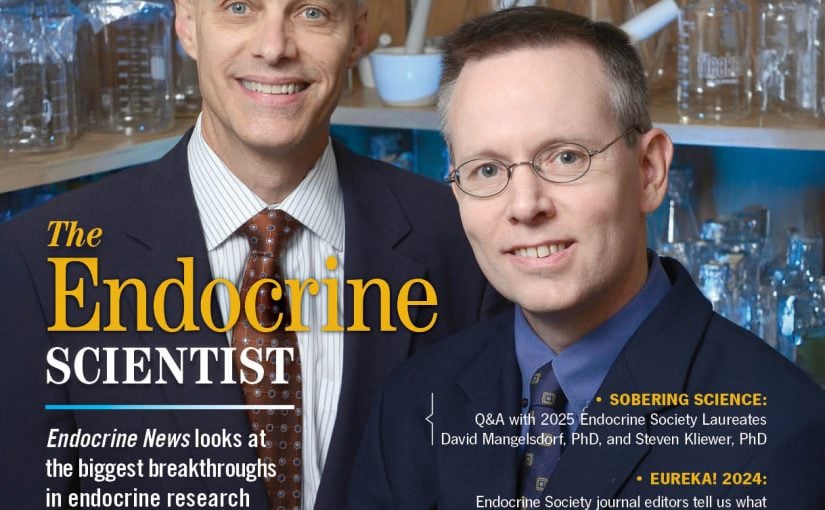The alarmingly high incidence of type 2 diabetes (T2DM) among minorities—especially blacks and Hispanics—was the compelling force behind the 2013 Reducing Health Disparities in Type 2 Diabetes Mellitus Summit, sponsored by Th e Endocrine Society, which took place in Baltimore March 22 and 23.
While T2DM can strike anyone, it takes a particularly heavy toll on minority groups, with it being twice as prevalent in African Americans, Hispanics, Native Americans, and Asian Americans as it is in whites, according to the Agency for Healthcare Research and Quality (AHRQ).
Th e summit—anticipated to be the first in a series— was the centerpiece of a Health Disparities Initiative started by Past President Janet Hall, MD, Massachusetts General Hospital, during her tenure last year. Hall, who opened the event, stated that the “broad goal [of the summit] is to bring together thought leaders in health disparities and diabetes to have a meaningful discussion of what health disparities are trying to teach us from a scientific perspective and how we can best use the information that we have to provide the best possible treatment for our patients.”
Hall’s goal as the incoming president in 2011 was to focus the Society on health disparities in endocrinology. “We hadn’t done much of a deep dive into health disparities as part of our focus,” she says, adding that “there is a growing appreciation of the size of the issue of health disparities in endocrinology. We chose to focus our first Health Disparities Summit on type 2 diabetes because of the size of the patient population and the known impact of health disparities on diabetes.”
United for One Goal
Indeed, T2DM was a hot topic as the summit saw speakers from such diverse institutions as Johns Hopkins, UCLA, the University of Alabama at Birmingham, the American Medical Association, the National Institutes of Health, the World Health Organization, the Food and Drug Administration, the University of Virginia, and many more. Th e speakers all discussed the efforts they and their institutions have made in addressing the seeming imbalance among ethnic and racial minorities and the incidences of T2DM in those populations.
One of the presentations noted that aside from minorities having less than optimal access to health care in many communities, they also tend to have worse insulin resistance and glucose metabolism than whites, according to Sherita Golden, MD, MHS, Johns Hopkins University. Th e result is a tendency for blacks and Hispanics to be overweight or obese, thus resulting in a higher incidence of T2DM.
Golden noted that these disparities are not solely in black and Hispanic populations; immigrant Asians as well as immigrant Hispanics also have a higher incidence of T2DM as they acclimate to Western culture. As they adapt, they tend pick up unhealthy habits, most notably alcohol and tobacco use as well as an increase in salt consumption often accompanied by a lack of exercise.
In many of these cases, the effects of T2DM are further accelerated due to a lower incidence of self-monitoring glucose levels in these groups. Golden added that a patient’s culture should also inform that patient’s treatment. As an example, she said that asking Asian patients to eliminate rice from their diet was culturally insensitive and would more than likely be unsuccessful.
Food Swamps & Food Deserts
In her talk regarding the importance of advocacy and public health policy to improve T2DM disparities, Arleen Brown, MD, PhD, from the University of California, Los Angeles, spoke about communities that have a large minority population and the likelihood that those neighborhoods would be bereft of healthy foods. She spoke of “food deserts”—a lack of grocery stores that sell fruits, vegetables, and other healthier items. She also talked about “food swamps,” areas where there are too many fast food restaurants or “too much of a bad thing.”
Due to the relatively inexpensive food found in these “swamps” and the type of fare on the menus, these communities were also contributing factors to health disparities since they were often in less prosperous areas. Brown further emphasized that in order to provide adequate outreach to these underserved patient populations, local practicing clinicians should hire clinical staff who understand the local languages spoken as well as the cultural norms.
The second day of the summit was comprised of panel discussions made up of researchers and clinicians alike, many of whom spoke on the first day. A highlight of the final day of the summit was a discussion on the future of health disparities research that included former Health and Human Services Secretary Louis Sullivan, MD.
In addition to the speakers, the summit also hosted about a dozen poster exhibits, many of which took the science of health disparities and put them into practice. For example, one poster detailed the efforts of a grassroots project in Texas that exceeded its goals to get more minorities with diabetes to improve their self-management of the disease. Another poster discussed a project at the Indian Health Center in Santa Clarita, California, where, by using Diabetes Prevention Program protocols, over 40% of the clients with T2DM were able to lower their risk of complications from the disease with an improved quality of life.
Hall says she is pleased with the Summit’s turnout and feels that it accomplished exactly what she hoped it would: bringing a variety of interested parties to the same table to get the discussion started. “This isn’t just Th e Endocrine Society’s issue,” she says. “This isn’t just the ADA’s issue. Th is doesn’t belong in any one specific interest group. Health disparities are a big problem that we all need to look at, study, and work together to combat.”

